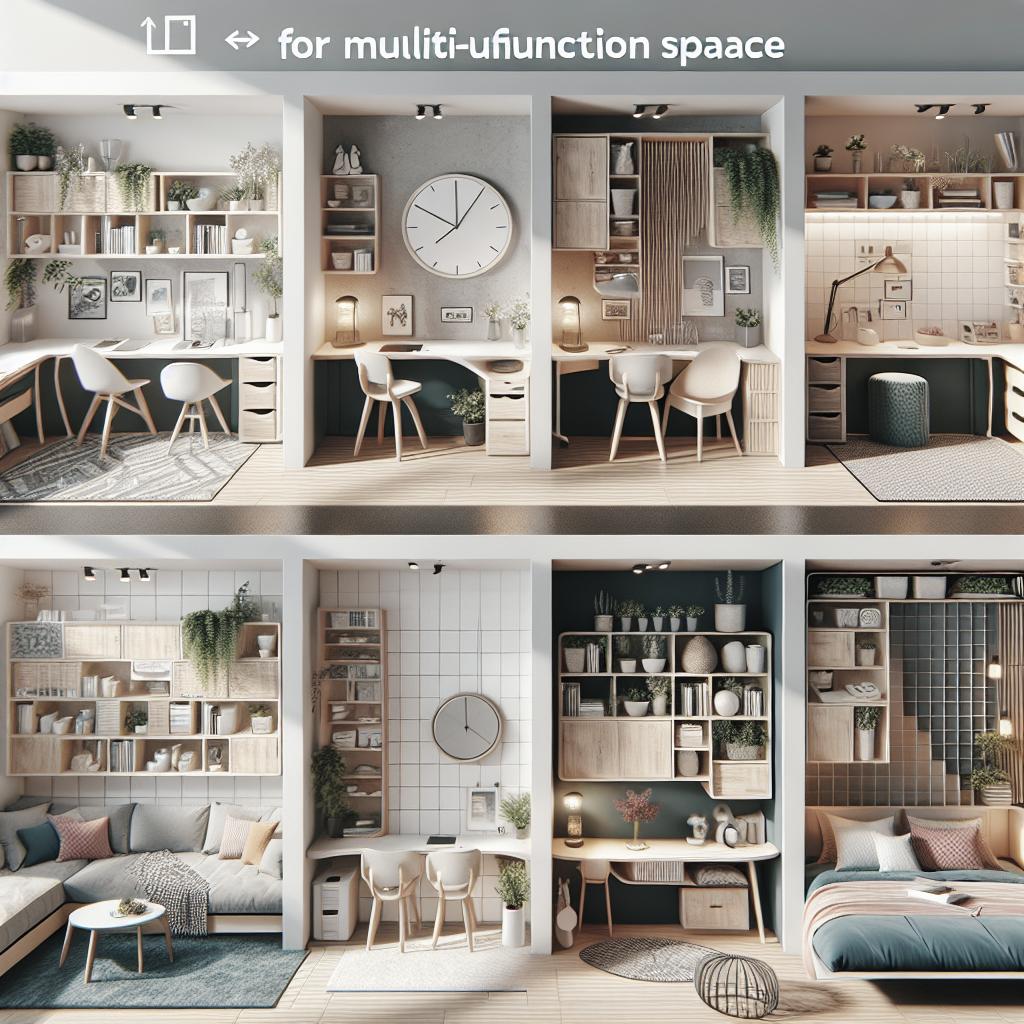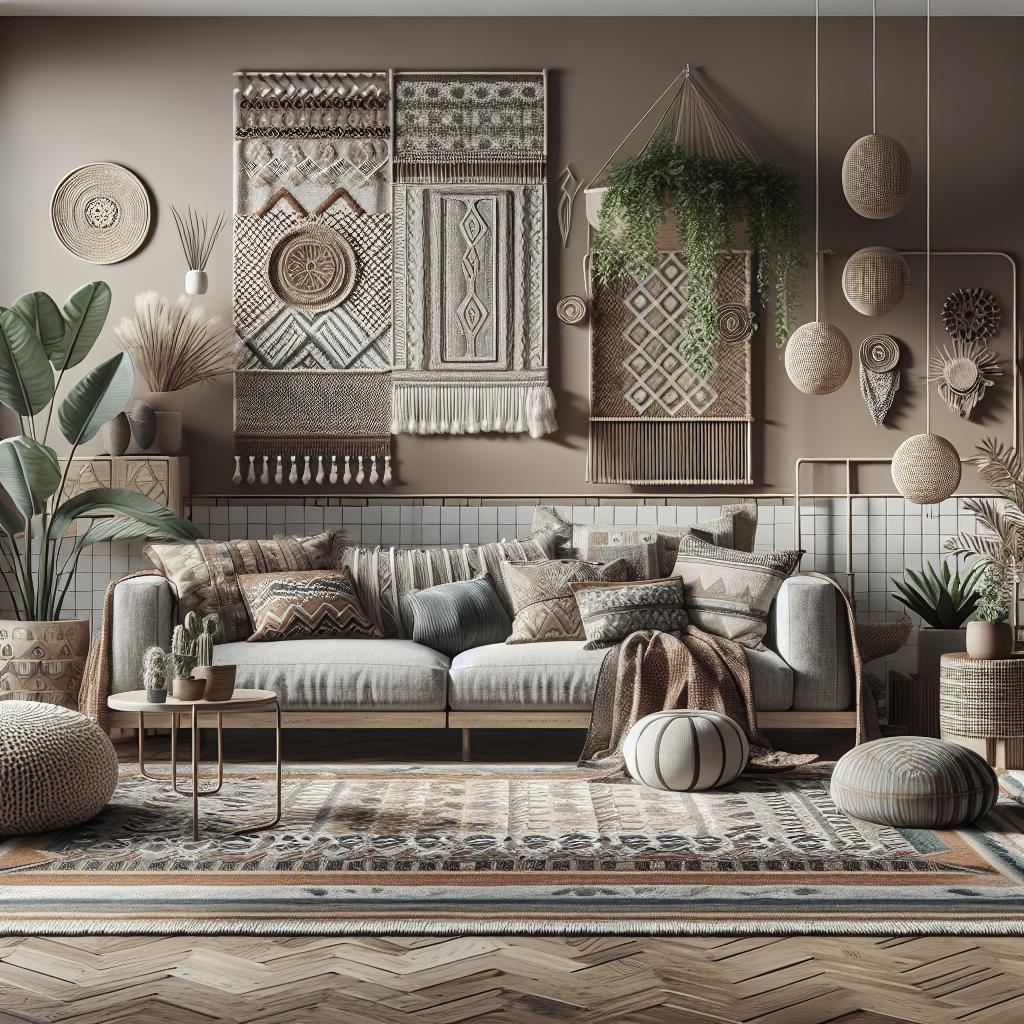In today’s fast-paced world, creating multi-functional spaces is becoming increasingly important for homeowners and apartment dwellers alike. Whether you’re living in a compact studio apartment or looking to maximize your home’s usability, designing spaces that serve multiple purposes can enhance your lifestyle and add value to your property. This article provides practical design tips to help you transform any area into a versatile environment that meets various needs without compromising on style or comfort. We’ll explore the importance of clearly defining multifunctional areas, the art of zoning, selecting flexible furniture, implementing clever storage solutions, and the benefits of timeless design. Additionally, the article will guide you on how to inject personality into these spaces and ensure they are well-lit to cater to different functions. By the end of this post, you’ll be equipped with the knowledge to create a dynamic living or working area that effortlessly adapts to your evolving requirements. ### Define the Room’s Functions The foundation of designing a multi-functional space lies in clearly defining its intended functions. Begin by identifying what activities you want to accommodate. Whether it’s combining a home office with a guest bedroom or integrating a dining area with a living room, knowing the space’s primary uses will guide your design choices. Consider how often each function is needed and whether any specific purpose takes precedence over the others. This prioritization will help you allocate space efficiently and determine which design elements deserve more emphasis. Once you have a clear understanding of the space’s functions, think about the needs and behaviors of those using the area. Consider factors such as who will be using the space, at what times of the day, and how the area needs to transition between functions. Gather input from all household members to ensure the space caters to everyone’s requirements. Reflect on any unique activities that might need special accommodations, such as storage for work-from-home equipment or space to practice a hobby. With well-defined functions, you can set the groundwork for a versatile, cohesive environment that serves your lifestyle effectively. ### Zoning Is Key Zoning plays a critical role in multi-functional space design by establishing distinct areas for different activities without the need for physical barriers. Start by visualizing the flow within your room—how people will move around and transition between zones. Use rugs, furniture arrangement, and color changes to subtly delineate spaces. Rugs can define seating areas, while color-coding can visually separate work and leisure zones. The strategic use of partitions like open shelves, sliding doors, or curtains can create privacy or change the dynamics of a room as needed. Incorporate architectural elements like nooks or alcoves to naturally divide areas, maximizing space usage while maintaining openness. Zones should harmoniously blend into one another, ensuring that different functions complement each other instead of clashing. Consider the level of interaction desired between zones; office spaces might benefit from quieter areas away from bustling kitchen-diners, whereas a living room might evolve seamlessly into a dining area. The key is maintaining flexibility, allowing your zones to adapt easily to changing needs or occasions. ### Choose Flexible Furniture The right furniture can significantly enhance the functionality of a space. Opt for pieces that serve multiple purposes, such as a sofa bed for a guest room or a dining table that doubles as a workspace. Modular sofas or extendable dining tables offer versatility and can be adjusted to fit different situations. Look for furniture on castors that can be easily moved or reconfigured when a change in layout is needed. Compact fold-out desks, nesting tables, or benches with storage can also be invaluable for maximizing limited space. When selecting furniture, ensure that each piece complements the overall design theme and offers comfort and durability. Quality should never be compromised for functionality; instead, aim to find pieces that meet both criteria. Incorporate furniture that encourages flexibility, supporting various activities throughout the day. Remember the importance of scale—avoid oversized furniture that might overwhelm the space and opt for items that blend aesthetics with purpose to maintain a seamless, clutter-free environment. ### Incorporate Clever Storage Solutions Effective storage solutions are essential in multi-functional spaces to maintain order and efficiency. Look for furniture that doubles as storage, such as ottomans with hidden compartments or bed frames with built-in drawers. Vertical storage options, like tall bookshelves or wall-mounted cabinets, help free up floor space while providing ample room to store essentials. Utilize underutilized areas, such as corners or wall space above doorways, to install additional shelving or hooks for hanging items. Custom-built storage solutions, tailored to fit the unique dimensions of your space, can provide significant benefits and make use of every available inch. Consider adding hidden storage areas, such as cabinets within staircase steps or pull-out drawers under seating. The key is to ensure storage is accessible yet out of sight, maintaining a tidy and organized appearance. Clever storage techniques can help you achieve a harmonious balance between functionality and aesthetics, providing ample space for everyday items and preventing clutter from disrupting the room’s design flow. ### Embrace Timeless Flexibility Creating a timeless design is crucial for maintaining a multi-functional space’s appeal over time. Opt for neutral color palettes and classic materials that can serve as a backdrop for various functions and styles. By keeping the base design simple and understated, you allow for easy updates and transformations without the need for costly renovations. Investing in high-quality, durable materials ensures that your space can withstand the rigors of daily use and adapt to future design trends. Incorporate adaptable elements that allow the space to evolve with changing needs. Removable wallpaper, interchangeable cushion covers, or easily adjustable lighting fixtures provide opportunities for quick style changes without a major overhaul. Consider the room’s longevity by planning for potential life changes, such as adding a new family member or working from home more regularly. A timeless multi-functional space respects your existing needs while being ready to accommodate unforeseen future requirements, allowing you to invest wisely in a versatile and enduring environment. ### Add Splashes of Personality While functionality is crucial, infusing personality into your multi-functional space makes it uniquely yours. Add personal touches through artwork, photos, or decorative items that reflect your tastes and preferences. Use vibrant accent colors or patterns in accessories like cushions or throws to introduce character and flair. Plants are an excellent addition, bringing life and breaks in the visual monotony while purifying the air. Balance personal elements with the room’s primary functions to avoid over-cluttering or making it feel disjointed. Select items that have personal meaning or serve a specific purpose to maintain a curated look. Incorporating your personality helps create a welcoming atmosphere, making each space a reflection of your identity while maintaining its intended versatility. Remember, the goal is to create a harmonious blend of practicality and individuality that collectively enhances the room’s overall ambiance. ### Layer Lighting Thoughtful lighting design is paramount in multi-functional spaces, where various activities require different levels of illumination. Start by including a mix of ambient, task, and accent lighting to support the room’s multiple functions. For instance, overhead lights can provide general illumination, while table lamps or pendant lights over work areas offer focused task lighting. Accent lighting, such as LED strips under shelves or spotlights on artwork, adds depth and dimension to the space. Consider lighting that can be adjusted to cater to different activities and moods, such as dimmer switches or smart systems that change light intensity or color. Layering different types of lighting allows for flexibility; bright lights for productivity during the day can be softened in the evening to create a relaxed ambiance. Ensure your lighting plan complements your zoning efforts, enhancing each area’s purpose without overshadowing others. Properly layered lighting not only boosts functionality but also adds to the aesthetic appeal, elevating the overall atmosphere of your multi-functional space. ### Future Prospects As the concept of multi-functional spaces continues to grow, keeping these design tips in mind will help you create environments that are both practical and stylish. Combining well-defined functions, clever zoning, and flexible furnishings with thoughtful lighting and personal touches will empower you to design spaces that are adaptable to the changing demands of modern life. Remember to balance each element to maintain harmony and fluidity across the room, ultimately resulting in a versatile and enjoyable space that stands the test of time. | Key Aspect | Description | |—————————|————————————————————————-| | Define the Room’s Functions | Identify the primary uses of the space and prioritize accordingly. | | Zoning Is Key | Use rugs, furniture, and color to define different functional areas. | | Choose Flexible Furniture | Opt for multi-purpose, movable furniture that adapts to different needs.| | Incorporate Clever Storage Solutions | Implement hidden and vertical storage to maximize space efficiency. | | Embrace Timeless Flexibility | Select neutral designs that allow easy updates and accommodate future needs.| | Add Splashes of Personality | Personalize with artwork and accessories without over-cluttering. | | Layer Lighting | Mix ambient, task, and accent lighting for functional and aesthetic benefits. |


